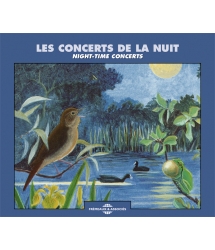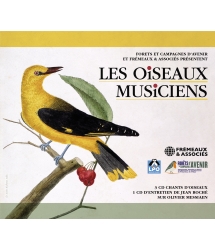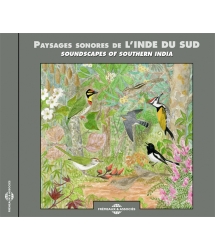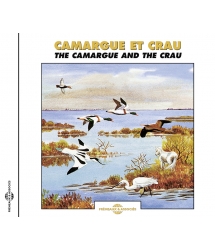- Our Catalog
- Philosophy
- Philosophers of the 20th century and today
- History of Philosophy (PUF)
- Counter-History and Brief Encyclopedia by Michel Onfray
- The philosophical work explained by Luc Ferry
- Ancient thought
- Thinkers of yesterday as seen by the philosophers of today
- Historical philosophical texts interpreted by great actors
- History
- Books (in French)
- Social science
- Historical words
- Audiobooks & Literature
- Our Catalog
- Jazz
- Blues
- Rock - Country - Cajun
- French song
- World music
- Africa
- France
- Québec / Canada
- Hawaï
- West Indies
- Caribbean
- Cuba & Afro-cubain
- Mexico
- South America
- Tango
- Brazil
- Tzigane / Gypsy
- Fado / Portugal
- Flamenco / Spain
- Yiddish / Israel
- China
- Tibet / Nepal
- Asia
- Indian Ocean / Madagascar
- Japan
- Indonesia
- Oceania
- India
- Bangladesh
- USSR / Communist songs
- World music / Miscellaneous
- Classical music
- Composers - Movie Soundtracks
- Sounds of nature
- Our Catalog
- Youth
- Philosophy
- News
- How to order ?
- Receive the catalog
- Manifesto
- Dictionnary











- Our Catalog
- Philosophy
- Philosophers of the 20th century and today
- History of Philosophy (PUF)
- Counter-History and Brief Encyclopedia by Michel Onfray
- The philosophical work explained by Luc Ferry
- Ancient thought
- Thinkers of yesterday as seen by the philosophers of today
- Historical philosophical texts interpreted by great actors
- History
- Books (in French)
- Social science
- Historical words
- Audiobooks & Literature
- Our Catalog
- Jazz
- Blues
- Rock - Country - Cajun
- French song
- World music
- Africa
- France
- Québec / Canada
- Hawaï
- West Indies
- Caribbean
- Cuba & Afro-cubain
- Mexico
- South America
- Tango
- Brazil
- Tzigane / Gypsy
- Fado / Portugal
- Flamenco / Spain
- Yiddish / Israel
- China
- Tibet / Nepal
- Asia
- Indian Ocean / Madagascar
- Japan
- Indonesia
- Oceania
- India
- Bangladesh
- USSR / Communist songs
- World music / Miscellaneous
- Classical music
- Composers - Movie Soundtracks
- Sounds of nature
- Our Catalog
- Youth
- Philosophy
- News
- How to order ?
- Receive the catalog
- Manifesto
- Dictionnary
AUSTRALIAN SOUNDSCAPES
DAVID LUMSDAINE
Ref.: FA635
Author : DAVID LUMSDAINE
Label : Frémeaux & Associés
Total duration of the pack : 1 hours 9 minutes
Nbre. CD : 1
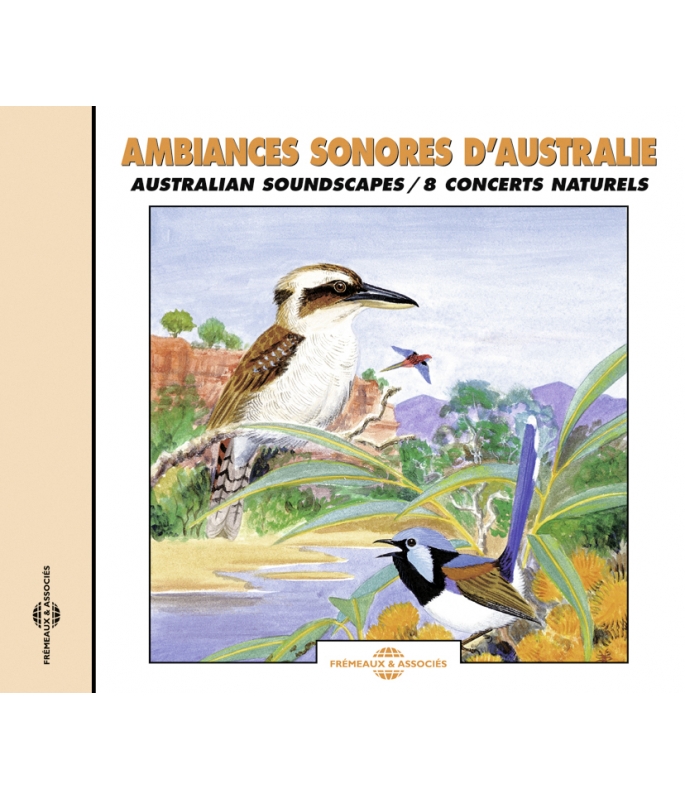
AUSTRALIAN SOUNDSCAPES
AUSTRALIAN SOUNDSCAPES
“This CD presents natural atmosphere recordings (in true stereo) from various parts of Australia : northern Queensland, New South Wales, the Great Dividing Range. The concerts are dominated by the songs and calls of birds, with a background of water, wind, insects and frogs. In 67 minutes you will be taken across eight life zones, each with its own unique mixture of sounds. Many of these are strange and unfamiliar to European ears.” Jean C. Roché & Patrick Frémeaux
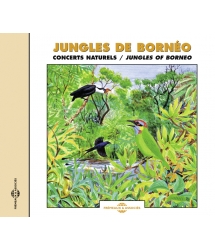
JUNGLES OF BORNEO
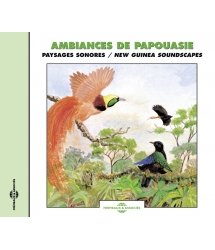
BIRDS OF PAPUA AND NEW GUINEA - NEW GUINEA...
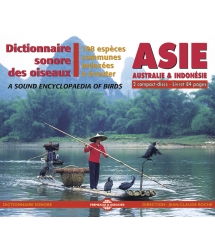
198 ESPECES INDEXEES A ECOUTER
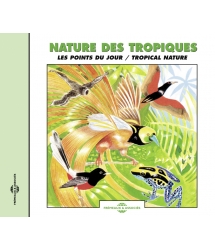
DUSK CHORUSES - TROPICAL NATURE





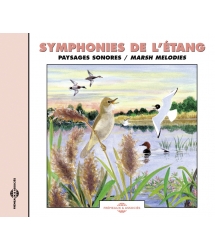

-
PisteTitleMain artistAutorDurationRegistered in
-
1Meunga Creek00:35:341992
-
2Lake Emu00:03:051992
-
3Rivière Red Gums00:05:351992
-
4Rivière Red Gums 200:04:581992
-
5Cambewerra00:07:281992
-
6Rivière Boyd00:03:331992
-
7Forêt de Tamo Shanter00:06:461992
-
8Cambewerra00:02:321992
Ambiances sonores d’Australie
Ambiances sonores d’Australie
Australian Soundscapes/8 concerts naturels
Introduction
Dans les milieux naturels restés intacts, les sons émis par les animaux sauvages reflètent souvent l’architecture du paysage. Ils participent à la diversité des espaces, aux rythmes journaliers et saisonniers, et même aux accidents météorologiques violents. Ils constituent un réseau de communication entre les individus, les espèces, les groupes et il existe une sorte d’unicité de ces sons qui n’appartiennent qu’à ce seul endroit et à ce seul instant où ils sont émis. Lorsque je compose de la musique, chez moi, je note les sons qui se forment dans ma tête. Dans la nature, j’étudie les rythmes, les harmonies, les mélodies, les timbres qui m’entourent et qui se forment donc en dehors de ma tête. En les enregistrant, puis en les retravaillant en studio, je compose de la musique d’une autre façon. Pour créer ces paysages sonores, je suis quelques règles précises : conserver l’intégrité des rythmes, l’unicité du lieu et de la saison, et l’équilibre du spectre sonore. J’essaye aussi de déranger le moins possible, de me rendre invisible. Pourtant, je suis inévitablement un participant à ce concert que j’enregistre, puisque les microphones sont dirigés par mes oreilles, et qu’aucune autre paire d’oreilles au monde ne les dirigerait de la même façon.
David LUMSDAINE
© 1992 SITTELLE – 2008 FRÉMEAUX & ASSOCIÉS
1. MEUNGA CREEK 35’35”
Lieu situé sur la côte est du Nord Queensland, à l’extrémité de la baie de Rocking. C’est un ensemble d’habitats tropicaux d’une grande variété, très riches en oiseaux. Septembre, en saison sèche. Liste des espèces dans l’ordre d’apparition sonore :
- Engoulevent elfe (Caprimulgus macrurus)
- Loriot australien (Oriolus flavocinctus)
- Cassican à dos noir (Cracticus mentalis)
- Œdicnème bridé (Burhinus magnirostris)
- Sourd roux (Pachycephala rufiventris)
- Sucrier à gorge blanche (Melithreptus albogularis)
- Sucrier fuligineux (Myzomela obscura)
- Rhidipures gris (Rhidipura rufiventris)
- Sucrier brun (Lichmera indistincta)
- Dick roux (Colluricincla megarhyncha)
- Sucrier à raies jaunes (Meliphaga macleanyana)
- Cassican noir (Cracticus quoyi)
- Malure aimable (Malurus amabilis)
- Sourd gris (Pachycephala griseiceps)
- Echenilleur choucari (Coracina papuensis)
- Tourterelle colroux (Geopelia humeralis)
- Dicée hirondelle (Dicaeum hirundinaceum)
- Monarque à lunettes (Monarcha trivirgata)
- Sucrier grâcieux (Meliphaga gracilis)
- Robin jaune (Eopsaltria capito)
- Myiagra brillante (Myiagra alecto)
2. LAKE EMU - à l’aube 3’06”
Marais situé à l’extrémité sud de la rivière Darling, à l’ouest des Nouvelles Galles du Sud. Novembre 1989. Liste des espèces :
- Rhidipure Willie (Rhidipura leucophrys) Canards sp. et Grenouilles sp.
3. RIVIÈRE RED GUMS - à l’aube 5’35”
Cette rivière aux rives boisées circule dans la grande plaine située à l’ouest des Nouvelles Galles du Sud, où la végétation est basse et arbistive. Première partie : l’aube. Novembre 1989. Liste des espèces :
- Dick roux (Colluricincla megarhyncha)
- Coucou brun (Chrysococcyx basalis)
- Tourterelle zébrée (Geopelia striata)
- Grimpereau picule (Climacteris picumus)
- Cacatoès rosalbin (Eolophus roseicapillus)
- Petit Oiseau-moins (Philemon citreogularis)
- Grimpereau à gorge blanche (Climacteris leucophaea)
4. RIVIÈRE RED GUMS - l’après-midi 4’58”
Même lieu que précédemment. Seconde partie : l’après-midi. Novembre 1989. Liste des espèces :
- Cassican flûteur (Gymnorhina tibicen)
- Dick chanteur (Colluricincla harmonica)
- Crave à ailes blanches (Corcorax melanorhamphus)
5. CAMBEWERRA 7’29”
Escarpement à l’est de la chaîne du Great Dividing Range, près des riches pâturages de la Kangaroo Valley. Octobre 1989. Espèce unique :
- Cassican à collier (Cracticus torquatus)
6. RIVIÈRE BOYD 3’33”
Au bord du plateau du Great Dividing Range, il y a un endroit où le ruisseau coule sur une roche plate percée de nombreux petits trous qui font résonner joliment les chants des grenouilles qui chantent de nuit. Liste des espèces :
- Grenouilles banjo (“Banjo frogs” en anglais)
- Gralline-Pie (Gymnorhina hypoleuca)
7. FORÊT DE TAM’O SHANTER 6’47”
Situés à quelques kilomètres en arrière de la plage de la Mission, dans le Nord Queensland, c’est une forêt côtière toujours verte dont il reste heureusement quelques parcelles protégées. Liste des espèces :
- Cassican noir (Cracticus quoyi)
- Oiseau-chat tacheté (Ailuroedus melanotis)
- Ptilope magnifique (Megaloprepria magnifica)
- Oiseau-Fouet de l’Est (Psophodes olivaceus)
8. CAMBEWERRA 2’33”
Même lieu qu’au paragraphe 5, mais à la tombée de la nuit. Octobre 1989. Espèce unique :
- Martin-chasseur géant ou Koukaburra rieur (Dacelo gigas)
Note de l’éditeur : Il y a dans la bande sonore des changements brusques d’atmosphères : ce n’est pas la faute du studio, c’est le choix de l’auteur.
English Notes
INTRODUCTION
In any relatively undisturbed area, the sounds of the creatures - birds, frogs, mammals, insects - reflect the shape of the landscape. The sounds characterize the diversity of the habitat, respond to diurnal and seasonal rhythms, and to the more chaotic patterns of the weather. They articulate a network of communications between individuals, groups and species, and - whether we understand these sounds as intentional, or as the product of an ordered chaos - there is an individual and group integrity to them which belongs to this place, now. These soundscapes are studies in rhythm, harmony and texture in the sounds of the natural world. For me, composing is usually the notation on paper of a listening which goes on “inside” my head. By contrast, these soundscapes are recordings of a very active listening which has gone on “outside” my head, but in the making and editing of these recordings I’m still composing. The general rules I’ve followed for composing my soundscapes are :
1. Retain seasonal and diurnal integrity.
2. Retain integrity of locality.
3. Retain a sense of the rhythm of the original scene. Temporal condensation of the material has been made as tactfully as possible, the longest sequences representing those periods of the greatest sonic activity.
4. As far as possible, retain the frequency spectrum of the original ambient sound.
5. Perhaps this rule should have come first, because it’s the most important. For environmental and musical reasons : create a minimal disturbance in the field. But I’m inescapably a participant in the field of action. Equally, I can’t avoid shaping what I ear. The microphones were directed by one pair of ears, and no other pair of ears would have heard these sounds in the same way.
THE SOUNDSCAPES
1. Meunga Creek is a tidal water flowing into Rockingham Bay, opposite Hinchinbrook Island, on the eastern coast of North Queensland. Here, in a relatively small area - most of it within th Edmund Kennedy National Park - is a complex of tropical habitats whose diversity is reflected in the number of bird species and the variety of their songs. The recording were made in September, during the dry season. Nights were cool and mild, with heavy precipitation in the littoral rainforest areas but, after sunrise, the days quickly heated up. There was not an hour, day or night, when birds were not singing and the dawn choruses were especially vigorous. Most remarkable are the early-morning choirs : the White-tailed Nightjars with their simple and insistent “chop, chop”, and the Yellow orioles and Black Butcherbirds with their equally insistent but more harmonious calls. The soundscape opens at 3.00 am with a view across the open areas to a melaleuca swamp. Bush Stone Curlew, Scrubfowl and Brush Cuckoo can be heard calling in the far distance. At 5.15, the Rufous Whistlers begin to weave their brilliant rounds into the stillness of the night and within a few minutes the air is alive with song. I followed the progress of the dawn chorus as I walked through the country north of Meunga Creek ; from the open woodland, where I camped, through the littoral rainforest and river mangroves to the beach. During the Rufous Whistler’s song isolated calls can be heard from a White-throated Nightjar, then follow White-throated Honeyeater, Black Butcherbird, White-tailed Nightjar, Dusky Honeyeater, Northern Fantail, Brown Honeyeater, Yellow Oriole, Northern Fantail, Yellow Oriole, Rufous Shrikethrush, Maclcay’s Honeyeater, Black Butcherbird, 2 Rufous Shrikethrushes, Black Butcherbird, Lovely Wren, Grey Whistler. Just after 6 o’clock the sun rises from the sea and a Little Cuckoo-shrike sings from a Casuarina on the beach. Above the quiet lapping of the waves and the hum of mosquitoes, the Scrubfowl and Brush Turkey can be heard busily scraping in the leaf litter. During the walk back inland, the choirs dissolve and the individuals songs through no less vigorous, become more intermittent. Rufous Shrikethrushes, singly and in pairs, provide an ever-varying refrain to Bar-shouldered Dove, Mistletoe Bird, Spectacled Monarch Flycatcher, Scrubfowl, Scaly-breasted lorikeets, Rose-crowned Pigeon, little Bronze Cuckoo, Graceful honeyeater, Pale Yellow Robin, and Yellow Oriole. The last song to enter the soundscape is that of the Shining Flycatcher. Two of them echo one another’s soft piping and frog-like croaks. It is just after 9 o’clock and the level of vocal activity has settled into the more gentle rhythm of the day. The soundscape ends abruptly, leaving the songs in mid air. 35’35”
2. An excerpt from the opening of LAKE EMU. It is full moon, just before dawn, at the swampy end of a flood lake on the Darling River, western New South Wales. A Willy Wagtail sings above a refrain of frogs and ducks. O4.15, 13/11/89. 3’06”
3. RIVER RED GUMS - dawn. Much of the country of western New South Wales is open plain, covered with low vegetation, such as Salt bush and Spinifex. In sharp contrast, the lines of the water courses and flood plains are well timbered. Along the banks of the Darling River and its billabongs grows an endlessly winding avenue of tall, sturdy, fantastically shaped River Red Gums which give shelter and sustenance to a wide variety of birds. The trees give their songs a cathedral-like resonance which contrasts with the lighter resonance of the Black Box and the complete absence of resonance in the open country beyond. This soundscape was recorded in Kinchega National Park, about 16 kilometres south of Menindee, 16/11/89. Part 1, among the gums on the river bank between 5.30 and 6.30. The main soloists are the Grey Shrikethrush, Horsefield’s Bronze Cuckoo, Peaceful Dove, Brown Treecreeper, Galahs, Little Friarbird and White-throated Treecreeper. Among the birds in the background are White-Plumed Honeyeaters, Mallee Ringnecks, and the Sacred Kingfisher. 5’35”
4. RIVER RED GUMS - forenoon. It is 10 o’clock and the warm sun has set cicadas and grasshoppers singing. Among the many birds calling intermittently, a White-backed Magpie wakens the resonance of the gums. It’s joined by first one, and then two Grey Shrikethrushes singing very close - but also very quietly - a kind of free subsong. To my ears here is a rambling fantasy to their music, an inconsequentiality shared by most of the birdsong this warm morning. By contrast, a group of White-winged Choughs chime in twice with their resonant piping calls as they move more purposefully through the understory.
5. Grey Butcherbirds is a fragment from CAMBEWARRA. The recording was made on the eastern escarpment of the Great Dividing Range in NSW ; at its foot to the west are the rich pastures of Kangaroo Valley, cleared by settlers in the middle of the 19th century. The original rainforest lives on in the gullies and sheer slopes of the mountains and remains home to an extraordinary rich variety of plants and creatures. Like so many endemic Australian birds, Grey Butcherbirds usually live in family groups. They use a variety of antiphonal calls to maintain the group’s bond, and the more musical the calls, the more closely they are identified with the particular group. In a dense gully, five young birds are being fed by four adults though only one or two adults are present at any one time (the calls you can hear from a distance are from the same group of birds as they forage for food). Throughout the recording a Satin Bowerbird is singing behind the microphones. Cicadas - which were providing most of the young Butcherbirds’ food - can be heard in the distance. 05.00, 22/12/89.
6. BOYD RIVER Crossing, NSW, is on a plateau on the Great Dividing Range. At this point the creek runs over a flat rock, pitted with numerous small holes which give a beautiful resonance to the calls of the frogs who sing all through the night. Just before first light, a distant White-backed Magpie begins his song. He is first joined by Kookaburras and then by rest of the dawn chorus including a Red Wattlebird. The frogs continue their songs in the foreground.
7. TAM O’SHANTER FOREST lies a few kilometres behind Mission Beach, north Queensland. Like the few areas of coastal rainforest which remain, it is “managed” by the State Forestry Department. Fortunately, there is a small area of the original forest which has been preserved, and it was here that I made this recording in September 1989. It opens with a Black Butcherbird singing at first light from the trees at the edge of the forest. Inside the forest, the trees are dripping with the overnight precipitation. Groups of Chowchillas call to one another - Black Butcherbird, Yellow-spotted Honeyeater, Graceful Honeyeater, Spotted Catbird, Scrubfowl, Wompoo Pigeon, Pale Yellow Robin and Eastern Whipbird are also prominent in the dawn chorus.
8. Evening Kookaburras from CRAMBEWARRA. It is dusk at the end of a mild spring day. Up and down the valley groups of Kookaburras greet the night with their choruses, as they greeted the first light of the day. You can also hear Yellow Robins, Wonga Pigeon, Satin Bowerbird, King Parrot, Whipbirds, frogs in a marsh by the creek, Boobook Owls and crickets. Sunset to dusk, 18.30 - 19.15, 31/10/89 (see 5).
David LUMSDAINE
© 1992 SITTELLE – 2008 FRÉMEAUX & ASSOCIÉS
CD Ambiances sonores d’Australie © Frémeaux & Associés. (frémeaux, frémaux, frémau, frémaud, frémault, frémo, frémont, fermeaux, fremeaux, fremaux, fremau, fremaud, fremault, fremo, fremont, CD audio, 78 tours, disques anciens, CD à acheter, écouter des vieux enregistrements, albums, rééditions, anthologies ou intégrales sont disponibles sous forme de CD et par téléchargement.)
